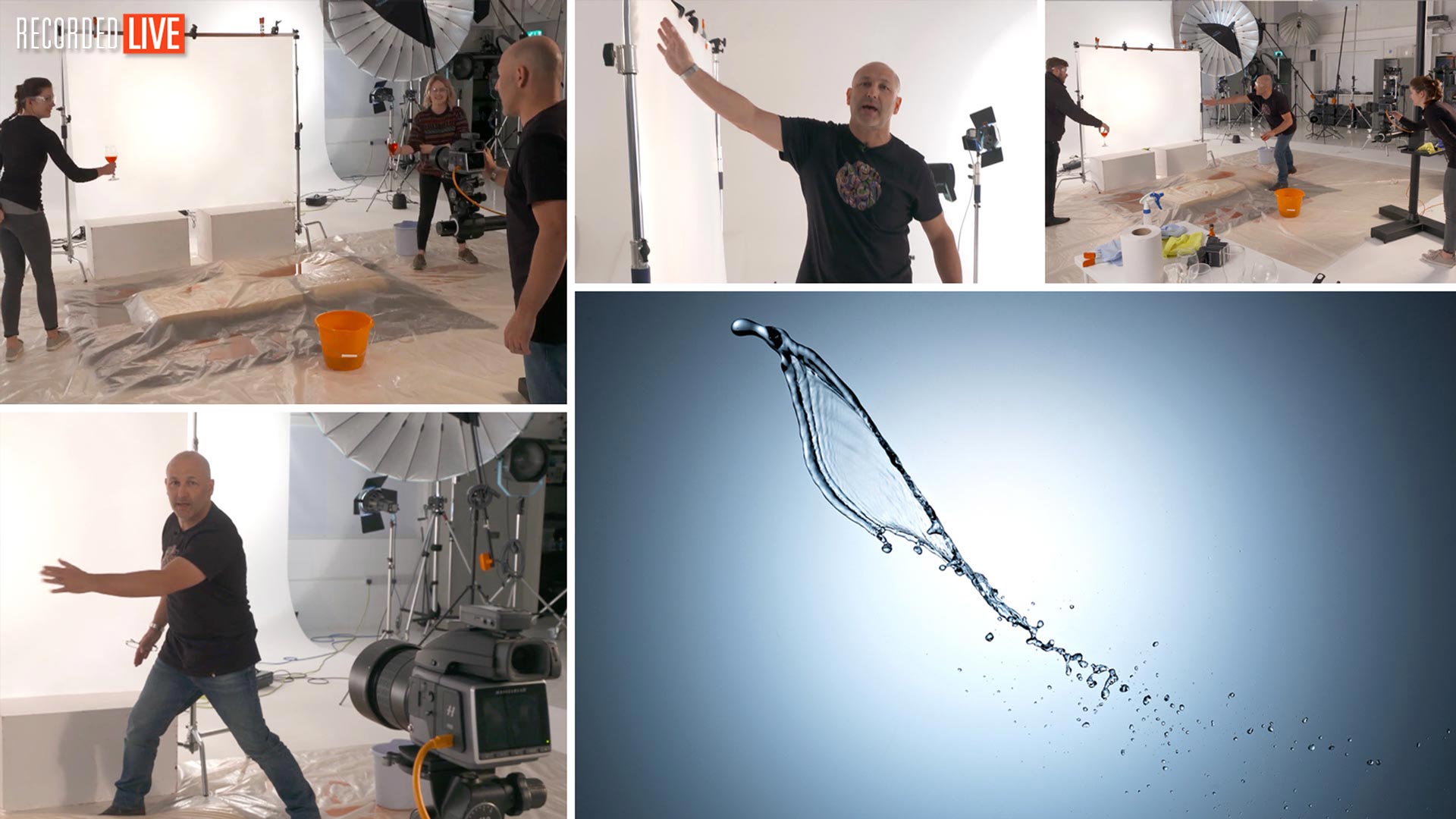Photographing Liquid Art and Motion
Freezing motion, especially liquids, can be a tricky and time consuming process. In this Liquid Art and Motion photography workshop Karl shows you how, with careful planning and the right techniques, you can improve your chances of getting a great shot.
He discusses and explains important concepts such as flash duration, sync speed and mirror lock-up and how each of these are important to getting the final shot.
Working with two Siros lights, Karl explains his lighting setup and offers solutions for those wanting to recreate the setup with speedlights. He also shows you how and why it’s better to time your shots manually, rather than use sound or motion trigger devices.
This live show is as informative as it is entertaining – a must-watch for any photographer wanting to learn how to freeze movement and create artistic imagery.
In this class:
- Liquid photography: How to photograph splash shots
- Fast flash duration and why it’s important
- Using mirror lock-up mode for motion photography
- Camera settings for splash photography
- Creative liquid photography techniques and ideas
Questions? Please use the comments section below.


Comments
I see you have what looks like Siros 400 at power 5, that means 12Joules ; am I missing something, did you only need 2x12J for this shot??
What was your flash speed?
Hi, I can’t remember if they were 400’s or 800’s? Did I say 400’s in the video as I mostly use the 800s, anyway if they were 400’s then at power 5 then yes they would be about 12 joules, although I was shooting at 200ISO so that would effectively put it back to 25joules. Then of course there was the second light which was also adding light and the Siros lights are very fast at that setting, probably about 1/8000s t0.1.
I really like how simple is this set up for that kind of result. Just a question: would you use the same set up with the beer instead of the water? Thanks in advance. Have a good start of the week.
Hi Roberto, yes if that’s what the shot required but each shot is unique and the requirements of the lighting on the product might be different, so it would depend on the client. I have done a whisky splash shot though with a similar lighting setup to this one.
I’ll watch it for sure. thanks a lot for your answer. Very kind of you. Have a nice day
At this point, I only own one strobe with high sync capabilities. Would using a second light behind the plexiglass to lighten up the edges (that does not have hss/freeze mode) cause motion blur?
Hi Shana, yes the second light will cause blur if it doesn’t have fast flash duration, unless the exposure level of that light is so low that it doesn’t contribute to the lighting of the fast moving object.
Is it the sheet of acrylic that’s giving the images a blueish hue?
Hi Jidoe, yes for some reason this frosted sheet does have a slight blueness to it.
Do the frosted acrylic sheets usually create a blue/cool temperature cast? Or do some of them also create warmer tones? In any case, if the desired result was a more neutral looking backdrop gradient (e.g. approx 5000 kelvin), I suppose that would be easy to adjust in post?
Hi Jidoe, I’ve heard of other people source frosted acrylic without any cast and I’ve had some too that have been slightly warmer. I think it all depends on the brand as acrylic comes from many different manufacturers and it may be that they are all slightly different. You can order samples though to check before you commit to bigger sheets. To be honest I’m OK with the slight blue tint as it was effective against flying whisky shot and it’s also easy to correct if necessary.
Hi Karl, I have the Siros L 800, do you use them on Highspeed mode for this shot or just “Normal”?
Hi Leoyabarai, you don’t need to use them in HSS mode if that’s what you mean but you do need to use them in speed mode, also the very fastest flash durations are only achievable when the unit is on power 5 or less.
Io uso i flash profoto D2 da 1000 watt , conviene usarli in modalita freeze
Dear Karl.
thank you for your fine explanations.
i learn so much from you.
if i don’t have power pack or my studio flashes doen’t show the duration time.
is there a way or Measuring Tools that can indicate the duration time ?, so i will able to know if it’s enough freeze liquids motion.
Hi, I’m not aware of any measuring device but my guess is there is something scientific somewhere. However I would just give it a go and check the results you get. Most flash operate at least at 1/1000 which is quick enough for many things.
THANK YOU VERY MUCH.
I use Godox Ad600 Pro
– Flash Duration: 1/220-1/10,100 sec
what duration is good for freeze liquids ?